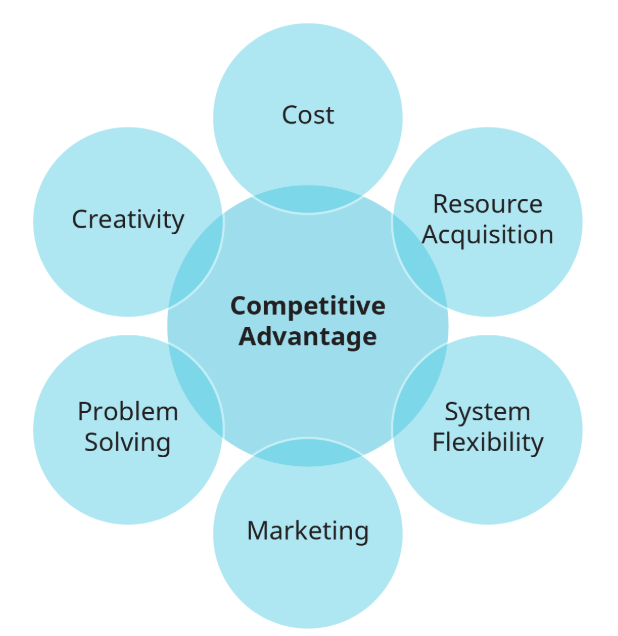Introduction to Workplace Diversity
Clayton Smith; Carson Babich; and Mark Lubrick
Before defining diversity, it is important to understand what multiculturalism is. Multiculturalism has a broad definition as its impact has spread through sociological, political, and colloquial use. To summarize, multiculturalism is the process of ethnic pluralism within a state or society through legal, social, and economic factors. The concept of ethnic pluralism means “more than one” ethnicity, in a state or society (i.e. Canada or Canadian society), and how multiple ethnicities interact in the legal, social, and economic aspects of that state or society. With different ethnicities comes different identities and influences. Diversity is the identity-based differences between people[1]. Workplace diversity is the identity-based differences of processes or outcomes within a work environment.
Within workplace diversity, there is what is called managing diversity, which refers to the action that leaders take to ensure all members of an organization or workplace are treated fairly and valued within it[1]. It is important that the learning goals leaders are working toward should go hand-in-hand with managing the diverse aspects of all learners. With different ethnicities, backgrounds, and life experiences, it is important to develop a framework that is diverse-cognizant to ensure that students are comfortable to learn in a diverse setting.
How is diversity to effectively seen to effectively manage it? One way is through understanding its types that are commonly present within organizations. Some topics at the onset of teamwork may be too personal to share, and may not need to be presented. However, over time different levels of diversity may suface, which can lead to a further understanding of an individual or group. Here is a set of different types of diversity that are present within organizations and everyday life[1]:
| Types of Diversity (Source: Copyright Rice University, OpenStax, under CC-BY 4.0 license) | |
|---|---|
| Surface-level diversity | Diversity in the form of characteristics of individuals that are readily visible, including, but not limited to, age, body size, visible disabilities, race or sex. |
| Deep-level diversity | Diversity characteristics that are non-observable such as attitudes, values, and beliefs, such as religion. |
| Hidden diversity | Diversity characteristics that are deep-level but may be concealed or revealed at the discretion by individuals who possess them, such as sexual orientation. |
When leaders or a managers are able to effectively handle diversity efficiently, it can produce both economic and social benefits. With diversity in the workplace, one particular study by Cox and Blake, conclude that diverse work organizations create a competitive advantage in areas of cost structures and human resources[2]. In addition, organizations that embrace a culturally diverse environment show benefits in three organizational areas[2]:
- Creativity.
- Problem Solving.
- Adapting to change.

However, there have been some reported negative effects when the topic of diversity is brought up within organizations. One of the biggest challenges that face managers within diverse organizations is lower organizational attachment; which is when, after diversity is presented in an organization, another group feels alienated[3]. An example of this can be the act of reverse discrimination within the workplace, which is described as a dominant group receiving discrimination from a diverse class of citizens[3]. This can lead to a wedge in the organizational makeup between different diverse groups, eventually leading to a shortage of goals met.
This leads to the importance of managing diversity effectively, ensuring all members, regardless of dominance or marginalization, be managed in a way that is fair, consistent, and valued. Not only can it avoid emotional rifts within the organization, it can help keep leaders out of trouble with the law, which is the next section of this chapter, dealing with legislation.
Within learning organizations, a more deeper understanding on multicultural leadership is being discussed. From isolating systems of otherness in organizational frameworks[4], to the awareness of culture, depth of mentorship, and inclusive measures in counselor pedagogy[5], all have an impact on how individuals learn about diversity in organizations.
With regard to sustainability, sustainable education and sustainable leadership mirror sustainable diversity through a lens of seeing the humanistic side of pedagogical change and growing strong and essential relationships between teachers, administrators, students and communities[6]. Ultimately, the role of multicultural leadership rests in the hands of public representatives, members of diverse communities, and accountability from learning organizations to enhance multicultural leadership.
Review Questions:
- What is multiculturalism and diversity?
- What are the three types of diversity presented in an organizational structure?
- Cox and Blake say that a diverse organizational environment is beneficial in what three organizational areas?

